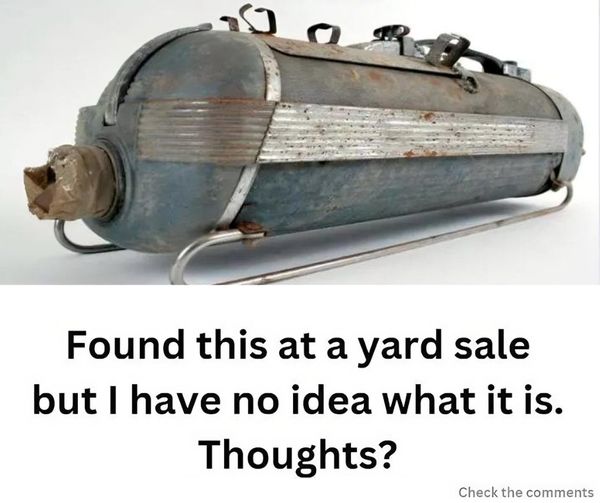The vacuum cleaner, a staple in modern households, has an incredible backstory that many of us overlook. It’s easy to take for granted the convenience of simply plugging in a device and watching it whisk away dirt and dust. But have you ever wondered how this handy machine came to be? Buckle up as we dive into the fascinating history of vacuum cleaners, tracing their roots from humble brooms to the advanced gadgets we have today.

The Humble Beginnings: When Brooms Ruled the Day
Before the vacuum cleaner became a household name, brooms were the go-to tool for cleaning. But even the broom, as simple as it may seem, had to be perfected. Did you know it wasn’t until 1797 that a farmer from Massachusetts decided enough was enough? After watching his wife struggle to sweep, he took it upon himself to create a broom that actually worked efficiently.
Enter the Broomcorn Revolution
This farmer’s invention, known as the broomcorn, was a game-changer. It became so popular that it soon spread to households across the country. But as time passed, people sought even more convenience. The broom, though effective, required a lot of manual effort. It was only a matter of time before someone thought, “There has to be a better way.”
The Birth of the Vacuum Cleaner: A New Era of Cleaning
Fast forward to the 1860s. The concept of a machine that could do the hard work of cleaning was beginning to take shape. Daniel Hess, an innovator of his time, created the first real vacuum cleaner. His design was revolutionary, as it utilized a draft of air to draw fine dust and dirt through the machine.
The Struggles of Early Designs: Not Quite There Yet
Though Hess’s invention was groundbreaking, it wasn’t without its flaws. It was still cumbersome and difficult to use. In 1869, Ives McGaffey of Chicago took a shot at improving the design. His vacuum, though more advanced, was ironically harder to use than a regular broom. His patent acknowledged the annoyance dust accumulation caused and aimed to solve it, but the market wasn’t ready for it yet.
The Luxurious Hercules Vacuum: Ahead of Its Time
The Hercules vacuum cleaner, introduced during the Great Depression, was a sophisticated machine for its era. Covered in expensive crocodile skin, it was a luxury item that many could only dream of owning. The timing of its release couldn’t have been worse—families struggling through the Depression couldn’t afford such extravagance. However, its existence marked a significant step forward in the evolution of vacuum cleaners.
A Showpiece of Innovation
The Hercules was more than just a cleaning tool; it was a statement piece, representing the cutting-edge technology of its time. Despite its lack of commercial success, it laid the groundwork for future innovations in household cleaning.
James Murray Spangler: The True Revolution Begins
The real turning point in vacuum cleaner history came in the early 20th century, thanks to James Murray Spangler. A 60-year-old janitor from Canton, Ohio, Spangler was driven by necessity to create a better cleaning solution. His health was deteriorating, and he needed a more efficient way to clean.
A Portable, Upright Design That Changed Everything
Spangler’s design was revolutionary. Unlike its predecessors, his machine was upright and portable, making it much easier to use. It didn’t just suck up dirt—it trapped it in an attached pillowcase, a feature that set it apart from earlier models. In 1907, Spangler patented his invention and took the brave step of quitting his job to start the Electric Suction Sweeper Company.
The Birth of the Hoover: A Household Name
Financial difficulties forced Spangler to sell his company to his cousin, Susan Hoover. This was the beginning of what would become the Hoover brand, synonymous with vacuum cleaners for decades. The Hoover vacuum cleaner wasn’t just a product—it was a revolution that made clean homes accessible to everyone.
The Modern Marvels: From Hoovers to Roombas
As we fast forward to today, it’s clear that vacuum cleaners have come a long way. From the broomcorn to the Hoover, each step in the evolution of these machines has brought us closer to the effortless cleaning we enjoy today. Modern vacuums, like the Roomba, even take human effort out of the equation entirely, autonomously keeping our floors spotless.
The Convenience of Today’s Technology
Imagine telling James Murray Spangler about the Roomba. A small, disc-shaped robot that glides around your house, vacuuming on its own? It would have sounded like science fiction back in 1907! Yet, here we are, living in a world where technology has made cleaning a breeze.
The Impact of Vacuum Cleaners on Daily Life
The journey from broom to Roomba isn’t just about the evolution of a product—it’s a testament to human ingenuity. Vacuum cleaners have transformed the way we live, making our homes cleaner and our lives easier. What was once a labor-intensive task is now something we can do with the push of a button.
A Reflection on Innovation and Progress
Looking back, the evolution of the vacuum cleaner is a perfect example of how innovation drives progress. Each new design built upon the last, making improvements and solving problems that previous versions couldn’t. It’s a reminder that even the most mundane tasks can be improved with a little creativity and a lot of perseverance.
Conclusion: Appreciating the Past, Embracing the Future
As we use our modern vacuum cleaners, it’s important to appreciate the history behind them. From the simple broomcorn to the high-tech Roomba, each iteration has made our lives a little bit easier. And while we may not know what the next big innovation in cleaning will be, one thing is for sure—the vacuum cleaner, in all its forms, will continue to be an essential part of our daily lives.
So, the next time you vacuum your home, take a moment to think about the journey this device has been on. It’s more than just a machine—it’s a symbol of progress and the never-ending quest to make life just a little bit easier.





